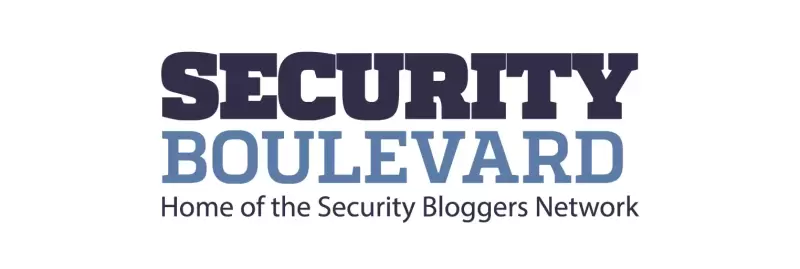 |
|
 |
|
 |
|
 |
|
 |
|
 |
|
 |
|
 |
|
 |
|
 |
|
 |
|
 |
|
 |
|
 |
|
 |
|
數據是新黃金。如果數據量增加,網絡威脅也是如此,則將數據保護構成當務之急。至少特權(POLP)的原則至關重要。

Data is the new gold. If data volumes surge, so do cyber threats, making data protection a top priority. The principle of least privilege (POLP) crucially comes to play here. But what is least privilege, and how does it contribute to creating safer environments?
數據是新黃金。如果數據量增加,網絡威脅也是如此,則將數據保護構成當務之急。至少特權(POLP)的原則至關重要。但是,什麼是最少的特權,以及它如何促進創造更安全的環境?
Least privilege is a cybersecurity principle where a user is granted the minimum levels of access necessary to complete their job functions. This approach minimizes the attack surface and mitigates the potential damage from security incidents by limiting access rights for users, applications, and computing processes to the bare minimum.
至少特權是一個網絡安全原則,在該原則中,授予用戶完成其工作功能所需的最低訪問級別。這種方法可將攻擊表面最小化,並通過將用戶,應用程序和計算過程的訪問權限限制為最低限度,從而減少安全事件的潛在損害。
A Broader Scope of Safe Environments
安全環境的更廣泛的範圍
The concept of safe environments extends beyond physical safety to encompass digital safety. When we increasingly rely on technology for daily operations, cybersecurity threats become existential threats. Cybercriminals are using more sophisticated tactics, and the damage from cyber-attacks continues to rise. The principle of least privilege provides a sturdy protective layer, limiting the potential damage from these attacks.
安全環境的概念超出了物理安全性,以涵蓋數字安全性。當我們越來越依靠技術進行日常操作時,網絡安全威脅就會成為存在威脅。網絡犯罪分子正在使用更複雜的戰術,網絡攻擊的損害繼續上升。特權最少的原則提供了一個堅固的保護層,從而限制了這些攻擊的潛在損害。
However, applying the least privilege principle extends beyond simply restricting user permissions. It also includes managing Non-Human Identities (NHIs), which are machine identities used in cybersecurity. Similar to a person requiring a passport and visa to travel, NHIs need a “Secret” (an encrypted password, token, or key) and corresponding permissions from a destination server for access.
但是,應用最低特權原則擴展到僅僅限制用戶權限。它還包括管理非人類身份(NHIS),這些身份是網絡安全中使用的機器身份。類似於需要護照和簽證旅行的人,NHIS需要一個“秘密”(一個加密的密碼,令牌或鍵),以及來自目標服務器的相應權限以訪問。
How Does NHI Management Enhance Safe Environments?
NHI管理如何增強安全環境?
The management of NHIs is fundamental to a holistic cybersecurity strategy. It focuses on securing both the identity and its access credentials while monitoring their behaviors. Key benefits of a robust NHI management strategy include:
NHIS的管理是整體網絡安全戰略的基礎。它著重於在監視其行為的同時確保身份及其訪問證書。強大的NHI管理策略的關鍵好處包括:
* Reduced risk: By identifying and mitigating security risks proactively, it helps minimize the likelihood of breaches.
*降低風險:通過積極識別和緩解安全風險,它有助於最大程度地減少違規的可能性。
* Improved compliance: It facilitates meeting regulatory requirements through policy enforcement and audit trails.
*提高合規性:通過政策執法和審計跟踪,它有助於滿足監管要求。
* Increased efficiency: It frees up security teams to focus on strategic initiatives by automating NHIs and secrets management.
*提高效率:它可以通過自動化NHIS和Secrets Management來釋放安全團隊來專注於戰略計劃。
* Enhanced visibility and control: It provides a centralized view for access management and governance.
*增強的可見性和控制力:它為訪問管理和治理提供了集中的視圖。
* Cost savings: It lowers operational costs by automating the rotation of secrets and decommissioning of NHIs.
*節省成本:它通過自動化秘密旋轉和NHIS退役來降低運營成本。
Implementing Least Privilege: One Step at a Time
實施最小特權:一次一步
The road to implementing least privilege starts with understanding the full scope of your environment from users to NHIs. Conducting a thorough audit will help you determine who or what has access to your system and to what extent.
實施最小特權的道路始於了解從用戶到NHI的環境的全部範圍。進行徹底的審核將幫助您確定誰或什麼訪問您的系統以及在何種程度上。
Next, it’s about defining access controls based on roles and responsibilities. It’s important to set strict policies and enforce them consistently. Lastly, regular audits and permissions reviews are necessary to ensure continued compliance with the least privilege principle. Technologies such as AI can be harnessed to automate these processes, increasing efficiency.
接下來,這是關於根據角色和職責定義訪問控件。重要的是製定嚴格的政策並持續執行它們。最後,必須進行定期審核和權限審查,以確保繼續遵守最低特權原則。可以利用諸如AI之類的技術來自動化這些過程,從而提高效率。
Striking the Right Balance
達到正確的平衡
While the principle of least privilege is a crucial protective measure, it’s also about striking the right balance. Overly restrictive access can hinder productivity and create bottlenecks. Therefore, it’s crucial to weigh security considerations against operational needs. For instance, some risk may be acceptable if it permits significant productivity gains.
雖然特權的原則是至關重要的保護措施,但它也涉及達到正確的平衡。過度限制的訪問會阻礙生產力並創造瓶頸。因此,將安全考慮與運營需求之間的權衡至關重要。例如,如果某些風險允許大量生產率提高,則可以接受。
Embracing a Culture of Security
擁抱安全文化
The principle of least privilege is more than a cybersecurity best practice; it’s a mindset. It’s about creating a culture of security where everyone understands the importance of data protection and their role in safeguarding it. This cultural shift is important as the preparation of safe environments is a shared responsibility.
最少特權的原則不僅僅是網絡安全的最佳實踐。這是一種心態。這是關於創造一種安全文化,每個人都了解數據保護的重要性及其在維護它中的作用。這種文化轉變很重要,因為安全環境的準備是共同的責任。
To sum it up, the principle of least privilege combined with robust NHI management creates safer environments by reducing attack surfaces and mitigating potential damages. It’s a continuous process that requires active involvement at all levels – from individual users to the organization’s top executives. By fostering a culture of security and implementing the least privilege principle, organizations can equip themselves better against constantly evolving threats.
總而言之,特權最少的原則與強大的NHI管理層相結合,通過減少攻擊表面並減輕潛在的損害來創造更安全的環境。這是一個連續的過程,需要各個級別的積極參與 - 從個人用戶到組織的高級管理人員。通過培養安全文化並實施最低特權原則,組織可以更好地裝備自己,以防止不斷發展的威脅。
免責聲明:info@kdj.com
所提供的資訊並非交易建議。 kDJ.com對任何基於本文提供的資訊進行的投資不承擔任何責任。加密貨幣波動性較大,建議您充分研究後謹慎投資!
如果您認為本網站使用的內容侵犯了您的版權,請立即聯絡我們(info@kdj.com),我們將及時刪除。
-

- 灰度,Altcoin Trust和中型躁狂症:有什麼交易?
- 2025-08-03 08:00:44
- 灰刻層以新的信任潛入中股山頂,而Solana ETF的競賽則升溫。這對Altcoins的未來意味著什麼?
-

- XRP,ADA和Altcoin Evolution:什麼是熱和下一步
- 2025-08-03 08:00:39
- 潛入XRP,ADA和AltCoins的世界。探索重塑加密景觀的最新趨勢,潛在的突破和創新項目。
-

- HBAR價格檢查:每月收益是否在此阻力水平上持有?
- 2025-08-03 07:58:04
- HBAR的價格大約在0.24美元左右,每月增長55%,但反對抵抗。它可以突破嗎?讓我們深入研究分析。
-

- 比特幣,加密和退休人員:一個新的投資時代?
- 2025-08-03 07:45:06
- 探索比特幣和加密方式如何通過創新產品(例如比特幣支持的證券,具有高收益率)吸引退休人員,並可能重塑退休投資策略。
-

-

- 阻止預售加熱:創新時的子踪跡符合處決
- 2025-08-03 07:30:26
- BlockDag令人印象深刻的預售和功能生態系統正在轉向腦袋。同時,SubBD的願景面臨著挑戰。發現為什麼執行是加密中的關鍵。
-

-

-





























































